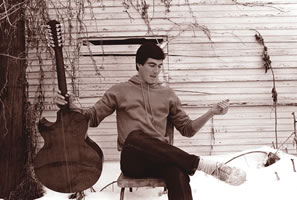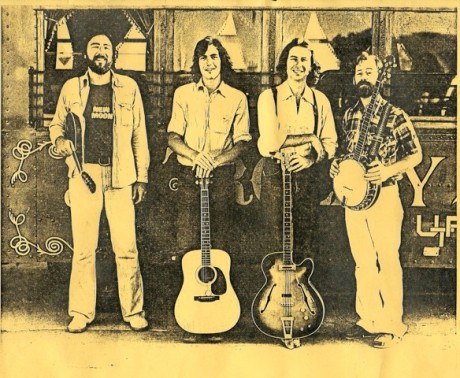
There are those who want the early dirt, not the polished resumés which are written after the musician ascends to his professional niche and acquires the usual impressive list of recordings, publications, concert venues and awards. This section is for those folks:
- Chris was born in Germany as an Army brat in 1951, moving 6 times before the family settled in Salt Lake City in 1964.
- Early on in Salt Lake City, during pre-teen and early teenage years, the guitar was merely an occasional diversion for Chris, who played stirring renditions of songs like Tom Dooley on an old out-of-tune black Silvertone acoustic played lap-style, one note at a time. The notion of chords hadn’t yet occurred to him. No signs of early talent were evident at this point.
- His early teenage years show Chris discovering the chord, and learning upwards of 5 of them, which of course made him eligible for the local garage band, whose only venue was the Fort Douglas Teen Club adjacent to Salt Lake City. The band’s repertoire consisted of any 60’s rock song to which any of the members could figure out the chords, such as Born on a Bayou, Satisfaction, Gloria, LIttle Black Egg, Day Tripper, and House of the Rising Sun. Still, no signs of early talent were evident at this point.
- In high school and then in college, Chris stumbled across the country blues, and experienced the epiphany to which instrumental players so commonly testify afterwards. A basement coffeehouse at the University of Utah, a couple of good blues players, and his life changed. He finished his studies in philosophy, but by the time he graduated in 1973, he was playing guitar 6-8 hours per day, listening to whatever records he could find, (Leo Kottke, John Fahey, John Renbourn, and a host of blues players like Blind Blake, Mississippi John Hurt, Elizabeth Cotten and Tampa Red). He located a few learning materials like Happy Traum’s early fingerstyle instructional books, and took all of two lessons from a local blues and folk guitarist.
- He seemed to have a knack for fingerstyle, learning pieces almost daily, and acquired a taste for tunings, for slide, for the 12-string, and for the techniques which make this style so challenging for the player and satisfying for the listener.
- He moved to Idaho, where his guitar playing, if anything, increased in intensity, and began to perform in duo settings with local folk singers in the usual dives and clubs which hosted that sort of music. A few fledgling instrumental pieces emerged from his 6 and 12-string guitars, but nothing special. Having no instruction available in rural Idaho, and no listening venues for original instrumental pieces, Chris moved back to Utah in 1978.
- Thinking that flatpicking might offer a quicker path to riches and fame, Chris and 3 friends formed a bluegrass band, New Moon, that played around the area for several years. Flatpicking eventually proved not to be Chris’s strong suit. See late ’70’s photo of New Moon, Tom Stetich, Chris, Mark Nelson and Jim Crowley, below.

- Back at home, he sold instruments and taught at a local music store, and enrolled again at the University of Utah, this time to study music theory, sight-singing, ear-training, counterpoint, and jazz theory for the next two-and-1/2 years. Chris now sees this decision to take on college-level comprehensive piano-based music theory training as the single best musical commitment he has ever made. It’s fair to say that his musical skills and knowledge grew by leaps and bounds during this period.
- His original instrumental pieces grew in complexity and his technique grew apace. Local gigs around Utah and the Intermountain West followed, and he recorded a few instrumental and vocal pieces on a demo tape (which he now hopes has disappeared from the world completely).
- He attended the Walnut Valley Festival in 1980 and 1981, competing in the Fingerstyle Competition in both years, then returned to win the competition in 1982, playing a selection of original pieces which wowed the judges and which led him to be invited to perform and judge at the festival the following year.
- In January of 1983, he released his first recording, Runoff, on California’s prestigious Kicking Mule Records, and began touring nationally. That event more or less brings us up to the rest of the story, contained on other pages herein, particularly the Resume page.
- Personal update- Chris lives in Salt Lake City with his lovely wife Tomi, and enjoys backcountry skiing, fly fishing, backpacking, hiking, river-running and numerous other outdoor activities. He owns lots of Taylor guitars, and looks forward to playing every one of them.
